Refine search
Actions for selected content:
23990 results in Ancient history
Title match
ΗΡΟΔΟΤΟΥ ΙΣΤΟΡΙΩΝ Ε ΤΕΡΨΙΧΟΡΗ
- from ΗΡΟΔΟΤΟΥ ΙΣΤΟΡΙΩΝ Ε ΤΕΡΨΙΧΟΡΗ
-
- Book:
- Herodotus: Histories Book V
- Published online:
- 16 October 2018
- Print publication:
- 12 December 2013, pp 51-92
-
- Chapter
- Export citation
Indexes
-
- Book:
- Herodotus: Histories Book V
- Published online:
- 16 October 2018
- Print publication:
- 12 December 2013, pp 339-351
-
- Chapter
- Export citation
Introduction
-
- Book:
- Religious Networks in the Roman Empire
- Published online:
- 18 December 2013
- Print publication:
- 12 December 2013, pp 1-4
-
- Chapter
- Export citation
Copyright page
-
- Book:
- Religious Networks in the Roman Empire
- Published online:
- 18 December 2013
- Print publication:
- 12 December 2013, pp iv-iv
-
- Chapter
- Export citation
Acknowledgements
-
- Book:
- Religious Networks in the Roman Empire
- Published online:
- 18 December 2013
- Print publication:
- 12 December 2013, pp viii-x
-
- Chapter
- Export citation
Introduction
-
- Book:
- Herodotus: Histories Book V
- Published online:
- 16 October 2018
- Print publication:
- 12 December 2013, pp 1-48
-
- Chapter
- Export citation
Religious Networks in the Roman Empire - Title page
-
-
- Book:
- Religious Networks in the Roman Empire
- Published online:
- 18 December 2013
- Print publication:
- 12 December 2013, pp iii-iii
-
- Chapter
- Export citation
Chapter Five - Theos Hypsistos: God-fearers, the rabbinic reforms, the fiscus Judaicus and the redefinition of the Jewish–gentile relationship
-
- Book:
- Religious Networks in the Roman Empire
- Published online:
- 18 December 2013
- Print publication:
- 12 December 2013, pp 224-286
-
- Chapter
- Export citation
Preface
-
- Book:
- Herodotus: Histories Book V
- Published online:
- 16 October 2018
- Print publication:
- 12 December 2013, pp vii-viii
-
- Chapter
- Export citation
Chapter Four - The Jewish Diaspora in the west: the rabbinic reforms, ethnicity and the (re?)activation of Jewish identity
-
- Book:
- Religious Networks in the Roman Empire
- Published online:
- 18 December 2013
- Print publication:
- 12 December 2013, pp 146-223
-
- Chapter
- Export citation
List of Maps
-
- Book:
- Herodotus: Histories Book V
- Published online:
- 16 October 2018
- Print publication:
- 12 December 2013, pp vi-vi
-
- Chapter
- Export citation
Select abbreviations
-
- Book:
- Religious Networks in the Roman Empire
- Published online:
- 18 December 2013
- Print publication:
- 12 December 2013, pp xi-xii
-
- Chapter
- Export citation
Title match
ΗΡΟΔΟΤΟΥ ΙΣΤΟΡΙΩΝ Ε ΤΕΡΨΙΧΟΡΗ
-
- Book:
- Herodotus: Histories Book V
- Published online:
- 16 October 2018
- Print publication:
- 12 December 2013, pp 49-50
-
- Chapter
- Export citation
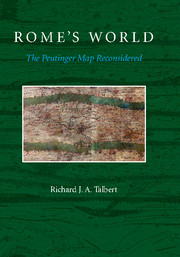
Rome's World
- The Peutinger Map Reconsidered
-
- Published online:
- 05 December 2013
- Print publication:
- 16 August 2010
-
- Book
- Export citation
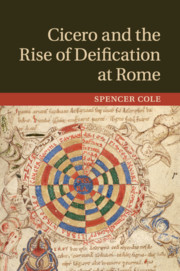
Cicero and the Rise of Deification at Rome
-
- Published online:
- 05 December 2013
- Print publication:
- 09 January 2014

Redefining Ancient Orphism
- A Study in Greek Religion
-
- Published online:
- 05 December 2013
- Print publication:
- 07 November 2013
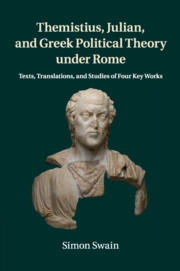
Themistius, Julian, and Greek Political Theory under Rome
- Texts, Translations, and Studies of Four Key Works
-
- Published online:
- 05 December 2013
- Print publication:
- 28 November 2013
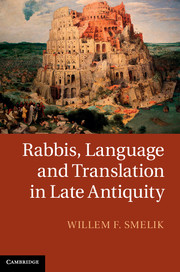
Rabbis, Language and Translation in Late Antiquity
-
- Published online:
- 05 December 2013
- Print publication:
- 31 October 2013
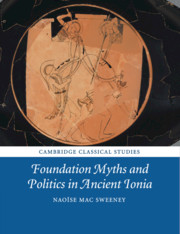
Foundation Myths and Politics in Ancient Ionia
-
- Published online:
- 05 December 2013
- Print publication:
- 21 November 2013
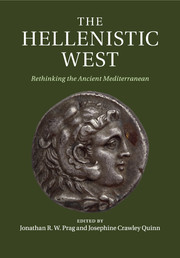
The Hellenistic West
- Rethinking the Ancient Mediterranean
-
- Published online:
- 05 December 2013
- Print publication:
- 24 October 2013
